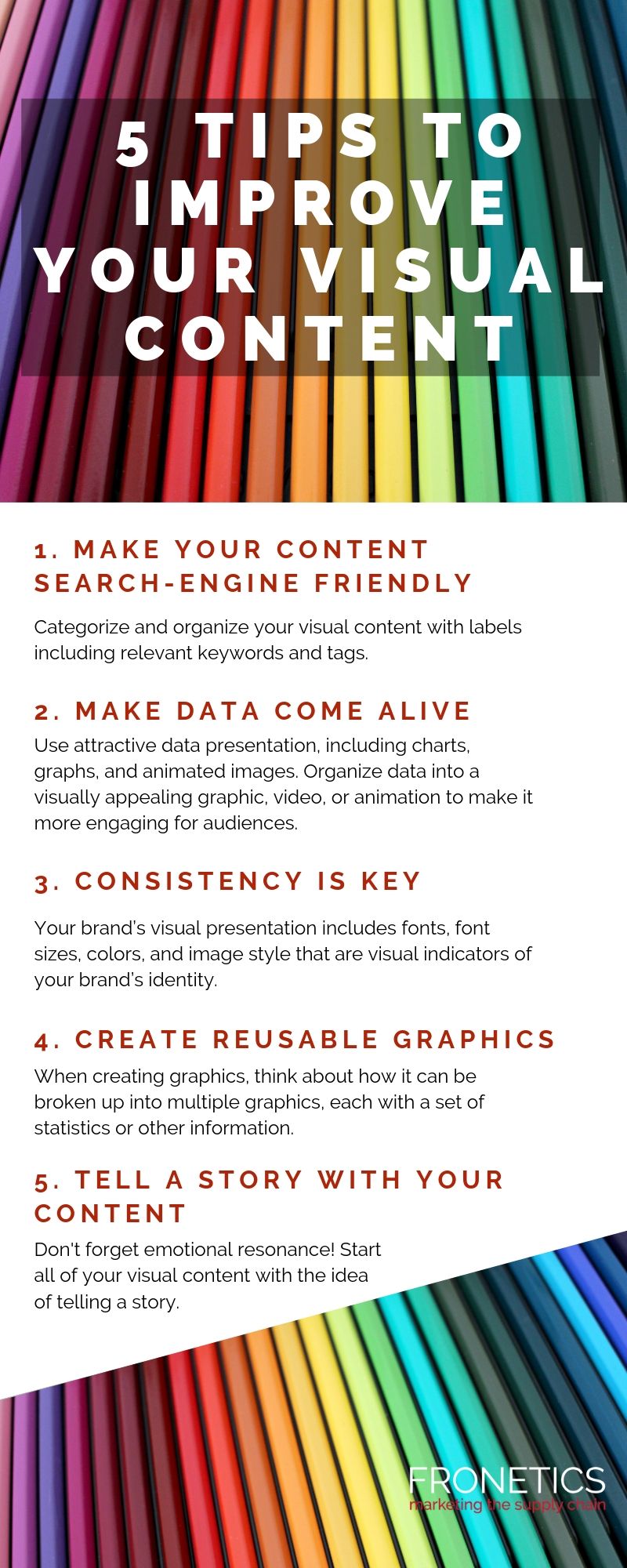
by Fronetics | Aug 28, 2019 | Blog, Content Marketing, Marketing, SEO
Being aware of the marketing acronyms being discussed on the internet is key to staying up with the latest digital marketing trends and ideas.
Highlights:
- Key performance indicators (KPIs) are the metrics you determine to be most important in measuring the success of a digital marketing campaign.
- All-important search engine optimization (SEO) is what allows your page to rank high among search engine results.
- A positive user experience (UX) is crucial to converting leads.
If you’re not up on internet language, the profusion of acronyms can sometimes make it feel like an unbreakable code. Being aware of some key marketing acronyms can go a long way toward helping your business generate online leads and revenue.
There are a seemingly endless supply of acronyms being thrown around out there, from the general to the highly specialized. These eight marketing acronyms are the ones you need to know to help you navigate digital marketing language and be on the cutting edge of best practices for your business.
8 marketing acronyms you need to know
1) KPI: Key Performance Indicator(s)
Effective digital marketing campaigns start with documented goals, accompanied by the metrics you will measure to determine how successful you are at reaching those goals. KPIs are your most important metrics. Choosing the right KPIs for a specific campaign is critical to its success, since these metrics are how you evaluate and tailor your efforts.
2) CTA: Call-to-Action
Even if you haven’t run across this particular one of our marketing acronyms, you’re probably aware of what it refers to. Your CTA is the vital step in which you ask your audience to take an action that moves them one step closer to your objective of connecting them with your company. Creating effective CTAs is key to converting leads.
3) SEM: Search Engine Marketing
SEM refers to the type of advertisements that appear on search engines such as Google, Bing, or Yahoo among the sponsored results. These advertisements can be effective if you choose your keywords wisely.
4) SEO: Search Engine Optimization
SEO is one of the most important marketing acronyms you’re likely to run across. All of your digital assets, particularly all website content, should be geared toward ranking highly when prospects search for keywords relevant to your business. There are mountains of material written on SEO, as it’s a crucial topic for digital marketers. Our four-part series on writing for SEO is a good starting place.
5) CRO: Conversion Rate Optimization
CRO refers to the idea of increasing the percentage of website visitors that take the desired action on your page – or, more specifically, the visitors that convert into leads. Optimizing your conversion rate means ensuring that your website design, content, and functionality make it easy and attractive to navigate, as well as being persuasive.
6) CTR: Click-Through Rate
Your CTR is the number of clicks an advertisement or post receives divided by the number of times it has been shown or shared. This metric not only lets you determine how effective your content is, but it also helps you measure engagement on social channels. An engaged audience and a high CTR means more opportunities to convert leads.
7) CPL: Cost Per Lead
When you’re paying for leads to be delivered to you through an ad campaign, your CPL refers to the amount you pay each time a user fills out a form, subscribes to your blog, or provides an email address.
8) UX: User Experience
When it comes to digital marketing, user experience refers to the ease and navigability of your website and other digital assets. CRO, for example, is one of many aspects of UX, which also is affected by the overall architecture of your site, how quickly your page loads, the quality of your content, how your website interacts with your social media accounts, and more.
What other marketing acronyms have you found useful?
Related posts:

by Fronetics | Aug 27, 2019 | Blog, Content Marketing, Current Events, Marketing, Social Media
Social media growth slowed for the first time, but marketers are still set to increase budgets in 2020. Here are three reason why they’re sticking with social.
Highlights:
- Social media promotes engagement, and can be used to reinforce ads and boost their performance.
- Brands can continually test campaigns on their platform, get immediate results, and scale successful outcomes.
- As followers like posts and engage with them, they help marketers build customer profiles and increase organic reach through shares and comments.
Video transcript:
Hi, I’m Elizabeth Hines, Creative Director at Fronetics, and today’s topic is 3 reasons why digital marketers are sticking with social.
Digital marketers have been using social media to deepen customer relationships and drive measurable business value. And social media investment remains high. If fact experts predict spending on social media marketing will increase over the next five years. But social media is not delivering on the goods. In fact, social media growth slowed for the first time this year since it started.
So why are digital marketers sticking with social?
1. Engagement
Traditional marketing methods have inundated the market. Consumers are exposed to 4,000 to 10,000 ads a day, most of which flash on a screen as an inherently passive activity. Social media, however, promotes engagement, and can be used to reinforce ads and boost their performance. Consistently publishing to your social media channels results in your brand remaining top of mind when a potential buyer is looking for your product or services and gives you accessibility to engage with audiences that are interacting with your social posts.
2. Cost
Marketers’ goal is always to capture leads and connect directly with prospects. Social media is a platform that companies can control at a relatively low-cost to operate. Brands can continually test campaigns on their platform, get immediate results, and scale successful outcomes. Whether it’s to network with industry professionals, provide customer service, or influence potential customers, social media provides a free, easily accessible way to do so. And more and more customers are expecting to be able to communicate on social media.
3. Mobile
The future of customer engagement is mobile. Social media, with its visual content and short text, is ideally suited for mobile engagement. Prospects engage with social media throughout the day due to its short-form nature, making it more likely you can connect with them. As they like posts and engage with them, they help marketers build customer profiles and increase organic reach through shares and comments.
For more information, please visit our website at fronetics.com.
Related posts:


by Fronetics | Aug 7, 2019 | Blog, Content Marketing, Logistics, Marketing, Supply Chain
As digital natives flood the purchasing landscape, visual presentation is critical. Our infographic offers tips to improve your visual content to resonate with today’s buyers.
Highlights:
- Visual content can be more easily digestible and compelling than purely text-based content.
- Optimize your visual content for search engines by accompanying it with searchable text and tags.
- Keep branding consistent with a unified color scheme and fonts.
The internet is becoming an increasingly visual space, and brands are feeling the pressure to stand out from the masses. But making an effort to improve your visual content doesn’t have to be an arduous chore. In fact, the type of complex information that supply chain marketers often need to present can be far more easily digestible in graphic format.
Strategically created and distributed content that is design-minded and visually appealing is your brand’s best friend. Our infographic offers 5 ideas to improve your visual content efforts, with a focus on broadening your brand’s reach, engaging your audience, and generating leads.
5 tips to improve your visual content

(Made with Canva)
1) Make your content search-engine friendly.
In the same way that social media analytics are struggling to keep up in an increasingly visual climate, search engines have yet to be effective at searching visual content. No matter how compelling your visual content, you won’t be getting the most out of your efforts unless you optimize your content for search engines.
There’s a simple solution to make sure your visual content makes it to the top of relevant search queries: post a text transcript with video or accompanying explanatory text with infographics and images. You can also make sure your visual content is easily searchable by categorizing and organizing it. Label visual assets like logos and images with relevant keywords, and tag them when publishing.
2) Make data come alive.
When it comes to presenting the kind of turgid data that’s often inherent in supply chain purchasing, visual formats are a marketer’s best friend. Supply chain marketers are ideally positioned to make use of attractive data presentation, including charts, graphs, and animated images. Organizing data into a visually appealing graphic, video, or animation makes it far more engaging and digestible for your audience.
3) Create reusable graphics.
Whether you’re creating visual content in house or outsourcing visual content creation, it behooves you to consider how it can be reused. When designing an infographic, for example, think about how it can be broken up into multiple graphics, each with a set of statistics or other information. You can combine these smaller graphics to other pieces of text content, adding visual appeal and boosting engagement.
These visual snippets are also ideal for posting on social media as teasers to link to fuller visual assets.
4) Consistency is key.
One of the most important things you can do to improve your visual content is make sure it’s consistent. Your brand’s visual presentation includes fonts, font sizes, colors, image styles, and any other graphic elements that are visual indicators of your brand’s identity.
Make sure all content creators in your organization receive clearly documented visual guidelines, along with samples for their use. Every time you publish visual content, include checking these guidelines as part of your editorial process.
5) Tell a story with your content.
The difference between good visual content and great visual content ultimately boils down to one thing: emotional resonance. The most significant way you can improve your visual content is to start with the idea of telling a story.
Ideally, you’re presenting data in a way that communicates a feeling and elicits an emotional response from the viewer. If your data is impactful, your viewers will forge an emotional connection with your brand.
What tips do you have to improve your visual content?
Related posts:


by Fronetics | Aug 6, 2019 | Blog, Content Marketing, Marketing, Supply Chain
Integrating marketing and innovation early in development paves the way for new products to succeed.
Highlights:
- In many organizations, marketing is declining and moving downstream.
- Innovation needs marketing to be successful, and the earlier marketers are involved, the greater the chances of success.
- Marketers can help innovations succeed by identifying buyer needs, understanding what makes a product attractive, generating buyer engagement, and more.
With the emergence of automation and artificial intelligence (AI) technologies, some companies are putting marketing on the back burner when it comes to allocating resources. While these technologies are invaluable tools for marketers, they should not be supplanting a robust marketing presence. Marketing matters now more than ever, and integrating marketing and innovation is perhaps the best thing businesses can do to create competitive advantage.
Brand-building expert and author Denise Lee Yohn writes that despite the recent decline of marketing and its consequent move downstream, “the full, business-growing power of the marketing function comes way upstream – from creating markets.” This is particularly true when it comes to innovation development. Simply put, innovation needs marketing.
When marketers are involved upstream in development discussions in the innovation process, businesses integrate the power of marketing and innovation. As Yohn puts it, “Strategic, upstream marketing that is incorporated into the innovation development process can clearly define who to sell the new offering to and how to sell it.”
5 ways integrating marketing and innovation leads to greater success
1) Identifying buyer needs
When an innovative design or process hits the market, its success can hinge on whether it meets (or is perceived to meet) an existing unmet buyer need. When marketers are involved early in the development stages of an innovation, they can offer valuable contributions about the needs of the target buyer persona. These contributions can help shape product development, and marketers are in turn able to preemptively drive interest and start generating leads before a new product even hits the market.
2) Understanding what makes a product attractive
Marketers have the knowledge and expertise to analyze buyer trends and address what Yohn describes as “the cultural, social, and psychological dynamics that should be addressed in the development of and communication about an innovative product.” In other words, involving marketers upstream helps shape product development toward marketability.
3) Generating buyer engagement
When engineers or designer talk about a product, they tend to focus on what it can do. When marketers talk about a product, they focus on what it can do for a target buyer persona. Particularly when it comes to marketing breakthrough innovations, buyers need to be educated about why they’re necessary. Marketing and innovation can work hand-in-hand to engage a target buyer segment by emphasizing the aspects of an innovation that make it directly beneficial.
4) Providing context
To illustrate how marketing can help “develop the entire customer experience ecosystem,” Yohn uses the example of the failure of the Sony e-reader as opposed to the success of the Amazon Kindle. Because Amazon integrated marketing and innovation early in the process, when the product launched, “it offered an integrated experience of hardware, software, service, and content.” In other words, marketers can provide necessary context for the launch of a new product to ensure that it launches into a market that’s ready to recognize its value.
5) Shaping go-to-market strategy
When marketers are involved from the development stage of a product, they can begin to develop an optimal go-to-market strategy. Marketers can identify the right channels to ensure that the product gets to the target buyer segment, as well as begin promotional efforts early in the process.
When combined strategically, marketing and innovation share a symbiotic relationship. As Yohn puts it, “Marketing needs to be less about what happens after an innovation is ready to launch, and more about getting it to be ready in the first place.”
Businesses that recognize the value of integrating and embracing marketing organization-wide stand at a significant competitive advantage.
Related links:


by Fronetics | Jul 31, 2019 | Blog, Current Events, Marketing, Social Media
Also this month in social media news: Facebook strives to attract content creators, and Pinterest debuts new video tools for brands.
Highlights:
- Less than a month after Facebook released details of its new cryptocurrency, the project has met a stumbling block from Fed Chairman Jerome Powell.
- Newly released statistics highlight key growth metrics and lay out expectations for digital marketing in the second half of 2019.
- Pinterest’s new video tools as well as updates from Facebook are geared to content creators and brands.
It’s hard to believe it’s already July and 2019 is at its halfway point. It’s a time when organizations are evaluating their performance thus far, and setting goals for the second half of the calendar year. To that end, both Mobile Marketer and Marketing Dive published key digital marketing growth statistics, and we’ve got the highlights for you below.
Last month, Facebook made news by releasing details of its new cryptocurrency, Libra. Now the social media giant has hit a roadblock, in the form of Fed Chairman Jerome Powell calling for a halt until serious concerns are addressed. Facebook is also making news this month by taking a page out if its competitors’ books in its attempt to attract more online content creators. Read on for details on these social media news items from July 2019.
Fed Chief Calls for Facebook to Halt Libra Project Until Concerns Are Addressed
Following closely on the heels of Facebook’s releasing details of its planned Libra cryptocurrency, U.S. Federal Reserve Chairman Jerome Powell said that the project “cannot go forward” until serious concerns are addressed. “Libra raises many serious concerns regarding privacy, money laundering, consumer protection, and financial stability,” Powell said before the U.S. House of Representatives Financial Services Committee.
The Fed chief’s tough comments not only underscore the regulatory hurdles facing Libra, but put pressure on the project, and dented the price of Libra’s forebear, bitcoin. The price of bitcoin fell by around 7% during his 3-hour testimony. Powell also called for regulatory review of the project to be “patient and careful,” while pointing to the fact that existing rules don’t adequately fit digital currencies.
“It’s something that doesn’t fit neatly or easily within our regulatory scheme, but it does have potentially systemic scale,” said Powell. “It needs a careful look, so I strongly believe we all need to be taking our time with this.”
Facebook spokeswoman Elka Looks responded to the testimony in an email to Reuters: “We are very much aligned with the Chairman around the need for public discourse on this,” wrote Looks. “This is why we along with the 27 other Founding Members of the Libra Association made this announcement so far in advance, so that we could engage in constructive discourse on this and get feedback.”
2019 Key Digital Marketing Growth Statistics Released
The midyear release of statistics from Marketing Dive and Mobile Marketer are important for brands and marketers to pay attention to. In the ever-shifting world of digital marketing, these statistics and trends offer valuable insight into where resources and time are best devoted.
Highlights from the reports include:
- Global online advertising spend is on track to grow 7% this year. That’s up from the 4% forecast in December 2018.
- Location-based marketing will likely grow 14%, reaching $24.4 billion in advertising spending by the end of 2019.
- 43% of all advertisers plan to increase spending on influencer marketing by April of 2020.
- Social referral traffic to retail ecommerce sites has grown by 110% in two years.
Facebook Strives to Attract More Content Creators
In an effort to attract more content creators to its platform, Facebook is giving videos more ways to make money. Observers have noted that the reigning social media giant is “pulling inspiration from other platforms to let you throw cash at your favorite video creators in the form of subscriptions or tokenized ‘stars’ that pay them a penny.”
Facebook’s announcement of its new video developments comes just ahead of VidCon, the world’s biggest conference for online video creators. It follows on the heels of three years of investments in the network’s video services and is in line with consumer trends toward video consumption.
Pinterest Debuts New Video Tools for Brands
Image-curating platform Pinterest is ramping up its video capabilities, in line with a larger consumer shift in viewing habits and a boost from advertisers in spending on social video. New video features include an improved uploader, video tab, lifetime analytics, and Pin scheduling.
The updated video uploader “enables businesses and creators to seamlessly upload video directly to Pinterest to engage with new and existing audiences, and access latest metrics,” according to the announcement.
Pinterest’s announcement points out that unlike on other platforms, videos don’t disappear (as they do on Instagram and Facebook Stories after 24 hours). To that end, their video analytics tool will allow businesses to gain insight into a video’s performance over its lifetime.
Related posts:


by Jennifer Hart Yim | Jul 30, 2019 | Blog, Content Marketing, Leadership, Marketing, Supply Chain
Supply Chain Management can boost productivity – and alleviate issues – for companies as they scale.
This guest post comes to us from Argentus Supply Chain Recruiting, a boutique recruitment firm specializing in Supply Chain Management and Procurement.
Awhile ago, we blogged about how more Startups are looking to Supply Chain Management to boost their productivity as they scale. Procurement – the effective purchasing of raw materials, back-office goods and professional services – as well as Logistics – the orchestration of the movement of those goods – might not seem to be as important as sales, marketing, R&D or finance at first blush. But failure to account for these factors can be a major bottleneck to growth, and many a startup has failed because of Supply Chain issues.
Supply Chain Management is an important factor for fast-growing hardware manufacturing companies, whether they’re producing goods overseas or at home. But it’s important in food manufacturing, consumer goods, Pharma, and Cannabis as well, as well as any industry with direct B2B sales. In fact, we recently brought on a new Cannabis client who’s scaling up a strategic sourcing operation in all of their Procurement, so that all their spend is captured and accounted for as they grow, rather than after. Rather than taming out-of-control spend later, they’re maximizing profitability by being strategic about the company-wide spend now, by hiring a team of Procurement category managers.
The most successful startups grow quickly by relentlessly focusing on the consumer – giving them a better product, or a better customer experience – but customer service is dead on arrival without an effective Supply Chain. Any growing company needs people to forecast demand, produce or source the goods to meet that demand, and ship it quickly and reliably to consumers, while only holding as much inventory as absolutely necessary.
As a founder or senior leader in a growing company, you might think that you have the expertise to “figure it out” on the fly, because how hard can it be? But trust us, if you don’t have Supply Chain experience, you can’t. Developing a product line and business model is hard. Getting it funded is harder. But as a founder, you don’t know true pain until you’ve been saddled with massive inventory because you failed to plan, or until you’ve seen an entire shipment waiting at port for customs clearance three weeks before your launch because you don’t have someone on staff who has the experience to get the paperwork in order before you need to.
Avoid failure.
That’s how Supply Chain has always advocated for itself, and you may have even heard about these considerations before. Get your Supply Chain in order, and you might avoid pain, but you’ll also experience innovation and opportunities to improve your customer experience in ways you never thought were possible. It can also reinforce your core company values and mission, and pass it on to customers in ways you haven’t considered.
As Dave Evans recently talked about in Bloomberg, setting strong values early is the key to sustainable growth at a startup. Most entrepreneurs get that. But what they don’t always get is the importance of making sure that these values extend into your Supply Chain. Founders need Supply Chain experts who can forge close relationships with suppliers, and find manufacturing partners who can provide opportunities to improve the brand.
Too many founders treat Supply Chain like a transactional necessity: “okay, where are we going to source product from fastest and cheapest?” But Evans talks about how founders can actually use Supply Chain Management as an opportunity to improve and build their brand. He uses the example of Everlane, which has built a successful fashion brand out of radical supplier transparency – making it plain to customers exactly where their products come from, and breaking down all the costs associated with bringing it to market.
So where do you start?
Different areas matter more for different industries, and different levels of maturity. A seed-stage startup might need to set an overall direction for logistics and distribution (i.e. what sort of 3rd party logistics solution will you look to leverage?), whereas a scaling business might be able to leverage strong Procurement to extract additional value from supplier relationships – as with the Cannabis company we mentioned above.
Do you want your Supply Chain to be fast, cheap, or flexible? Skilled supply chain professionals can usually help you excel at two of those. The best in the business can get you all three. But if you don’t have any of that expertise, you’ll get zero.
Areas that startups need:
- Logistics and Distribution Strategy
- Demand Planning
- Production Planning
- Lead Time Management
- Inventory Planning
- Supplier Relationship Management
- Strategic Sourcing/Shared Services Procurement (growth stage)
Today’s top Supply Chain Management professionals can bring all these considerations to bear. One other thing to consider: manpower expenses are one of the highest costs in scaling a business, and you don’t want to take on extra full-time staff if you don’t have to. So one thing companies will do is hire a seasoned expert who has developed and implemented Supply Chain strategies at scaling companies before on a contract basis – say 6 or 12 months – to implement the process and strategy, and then move on to another contract. You will likely have to pay a bit more per-hour, but it can be a tremendously flexible and high-value option, especially because some of the best in the business are now working on contracts for growing companies.
Any way you go about it, failing to plan a Supply Chain can quickly sink a growing company – and developing one that excels will make a growing company soar.
If you fail to plan, you plan to fail. Having Supply Chain Management professionals in the room is some of the best business planning possible in 2019. That’s why they’re a founder’s secret weapon.
Related posts:











